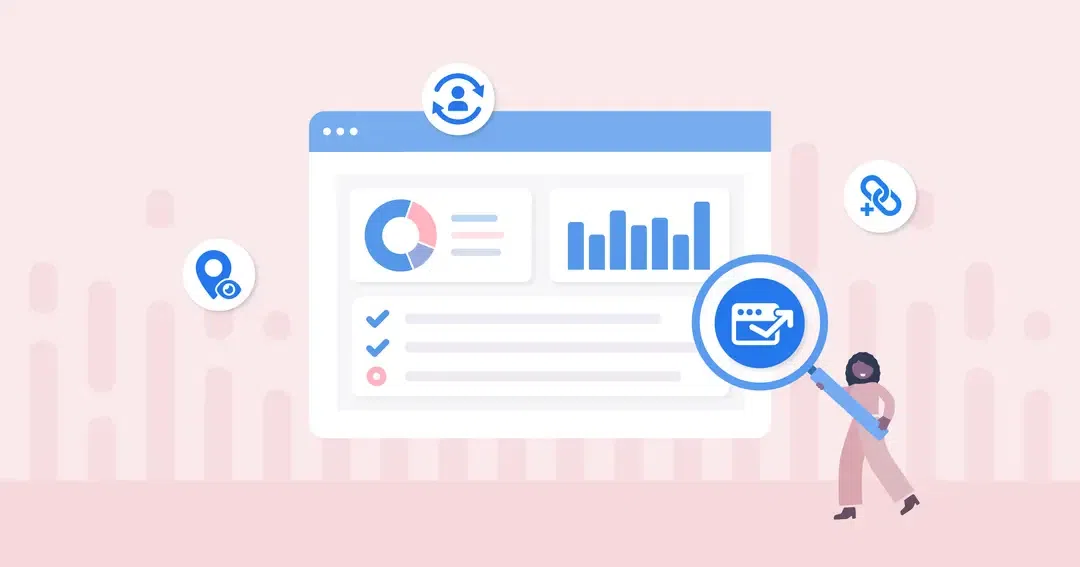Search Engine Optimization SEO is a crucial part of the digital marketing strategy for any business. However, due to the constantly changing trends, it becomes important to track and analyze your SEO efforts to keep up with the changing demand.
To ensure that you are going the right way, there are some key SEO metrics that help you measure and analyze the performance of your SEO strategy.
In this article, we have discussed these key SEO metrics you should keep an eye on. So read on for better online visibility and results.
10 Key SEO Metrics To Track
- Organic Traffic
Organic traffic is the traffic you get from the SERPs without paid ads. It shows your website’s visibility for keywords related to your business. So, if your organic ranking goes up, it indicates a successful SEO strategy.
Increasing your website’s visibility for relevant keywords is the goal of an SEO strategy. And narrowing your tracking to just organic ranking gives you a better idea about the impact of your SEO strategy.
To track your organic traffic in Google Analytics, do the following.
- Log in to your dashboard and click ‘add segments’ in the ‘audience overview.’
- Then select ‘organic traffic’ and ‘ apply.’
- You will see the organic search result in percentage as a part of overall traffic.
You can see the total number of sessions in this report and the changes in traffic over time. You can also change the time frame to weeks and years to see your organic traffic performance.
- Ranking Keywords
Ranking keywords is also one of the most important SEO metrics to track. Because you are optimizing your website to rank for specific keywords, monitoring how your rank for them changes is a good strategy.
You get an idea about your organic visibility when you know which keywords you are ranking for. So you can decide if you want to optimize the ranking keywords further or want to target different keywords you want to rank for.
You can check the ranking for important keywords manually with Google search. It will show you where you stand for these terms. But for a more detailed analysis of the ranked keywords, use tools like Google Analytics, SEMrush, serpple keyword rank tracker, Ubersuggest.
Here is an example of one such report with SEMrush. You can see the overview of the search position organic report. Moreover, you can see all the keywords your site ranks for and their position.
Looking at these reports regularly and monitoring the changes is a great way to see the improvement in search visibility.
- Click-through Rate (CTR)
Your CTR indicates the percentage of searchers who visit your site after seeing your page in web results. So if 20 out of 100 users click on your site, your CTR will be 20%.
CTR indicates how well online searchers respond to your page and how effectively it can grab their attention. In short, it is a great indicator of the quality of your title tags and meta descriptions.
These tags are the first things a user sees when your site pops up in their search results. For example, anyone searching for janitorial services in San Diego will most likely respond to the following result.
It is because the title indicates key information, like the contact details. So, if your CTR is low, it means you need to optimize your site’s meta title and description. But ranking also plays an important role in the CTR rate, as the top three sites on a SERP enjoy more than 50% of the CTR of all the results.
Still, you need to track your CTR consistently. You can do it under the performance tab of Google Analytics. There, you can view CTR by query, device, or page. With this, you can find out which content is not bringing enough CTR and make the required changes.
- Bounce & Exit Rate
The bounce rate of a website is the percentage of users leaving the site after they don’t find what they are looking for. It is one of the best SEO metrics to see if your content is in line with what users want.
When they click on your pages from the search results, they expect something from it. So when the page doesn’t contain the relevant information, they exit it and select a different search result.
A high bounce rate indicates that your page doesn’t contain the content your audience wants. While a low one means you are doing something right.
On the other hand, exit pages are the last pages people visit on your site. These pages make people lose interest. These parts of your sites lead to most drop-offs. So, you may need to monitor the drop in large chunks of traffic after visiting certain pages.
After finding those pages, you should change their content or rework the entire pages. You can track exit pages in Google Analytics by going to ‘Behaviour’>> ‘Site content’>> ‘All Pages.’
You will be able to see the exit % of all the pages on your site. Then, you can take steps to improve the page and reduce the exit rate.
- Core Web Vitals
Google rewards sites that provide better user experience. And how fast your page loads is important for that. But just checking the conventional metrics like load speed doesn’t give full results for what users care about.
So, to prevent this, Google introduced Core Web Vitals in 2020. These are more user-centric performance metrics and UX-friendly ways to measure the page load time. And they are an important part of SEO-friendly website design. The three web vitals include the following,
FID ( First Input Delay)
FID measures the responsiveness of the page and quantifies user experience from the first interaction.
CLS ( Cumulative Layout Shift)
CLS measures the visual stability of the page to the changing layout shifts of the visible page content.
LCP( Least Contentful Paint)
LCP measures the perceived Load Speed and the time when the largest content on the page has loaded.
According to Google, here is the scale for good and bad Core Web Vitals.
Source: Chromium Blog
You can see your pages’ performance in Core Web Vitals in the ‘Enhancement’ section of Google Console. Another way to do that is with the PageSpeed insight tool.
Here is an example of the page Speed Insight report of a Spa offering skin care and body treatment in San Diego.
It is evident from the report that the site’s core web vitals are optimized for better loading speed, which leads to an overall high-performance score.
- Domain Authority
Improving your site’s authority is one of the most important goals of an SEO strategy. You can easily measure your site’s Domain Authority with tools like Website Authority Checker.
Just enter the link to your site’s domain, and it’ll display a number from 1 to 100. Let’s see this with the website of a company that provides carpet cleaning in San Diego.
Source: Monster Steamer & Air Duct Cleaning
The site’s DA is low. But with a proper link-building strategy, the company can increase its Authority.
You should continuously monitor your site’s DA to see the progress of your link-building strategy. Also, it can help you see the increase in your company’s credibility over time.
- Page Per Session
Page Per Session is also one of the important SEO metrics to track. It denotes the number of pages a user visits on your site before leaving it. The more, the better the measurement of this metric is simple.
It means people are sticking around to visit more of your pages. Open Google Analytics to see your pages per session. Then click ‘Acquisition’>> ‘All Traffic’>> ‘Channels.’
A low page per session may indicate your audience doesn’t find your content engaging or relevant. It can also indicate a problem with your site navigation, hindering their user experience. So, tracking the Page Per Session helps you discover these problems and go to their roots.
- New Backlinks & Referring Domains
In addition to tracking your Domain Authority, you should also track new backlinks and referring domains. However, there is a slight difference between total incoming links and referring domains.
The first one indicates all the links to your site. But the second one details the new unique domains linking from which you have a link. You can easily measure both these metrics with online tools like Backlink Checkers.
A benefit of links from a new site is that they can improve your site’s DA more than the domains that already link to you. So you should include both details in your report for better results.
- Pages Crawled Per Day
A faster crawling time means Google Crawler can index your site quickly and easily. Due to this, there are higher chances of ranking on The SERPs. You can check how many pages Googlebot crawls every day with Google Search Console.
Just go to settings and click on Crawl Stats. It will show you the pages crawled each day for the past 90 days. But if Google bots are only crawling a small percentage of your site, there may be an issue with your crawl budget.
Google will not crawl every page of your site, as it can cost too many resources. So, you should optimize your site with technical SEO in such a way that it crawls only the important pages.
- Conversions
Lastly, the conversion rates are also one of the important SEO metrics to track. It indicates the success of your overall SEO strategy. It also indicates the impact on important business goals like leads and sales.
So, to track information about conversion rates, you need to set up custom goals in Google Analytics. Here are things you can create goals on.
- Online Purchases
- Email newsletter signup.
- Lead form submission
- It can also be any other thing that brings in business.
Then, you can measure the percentage of customers taking these actions that contribute towards overall success.
Conclusion
You want to see the results when you implement SEO strategies for your business. Tracking these key SEO metrics can help you monitor the success of your efforts and find areas that need improvement.
Monitoring organic traffic can help you know and improve your site’s visibility. Similarly, ranking keywords will let you know if your efforts are working or if you need to find different keywords.
Other areas that can help you find gaps in your strategy are bounce and exit rates and pages per session. By tracking Core Web Vitals, you can gauge and improve the UX of your visitors.
Lastly, keeping track of your DA and backlink profile can give a first-hand view of the growing credibility of your business.





